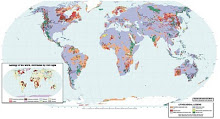BMC Genomics. 2011 Apr 1;12:173.
Benton MA, Rager JE, Smeester L, Fry RC.
Department of Environmental Sciences and Engineering, Gillings School of Global Public Health, University of North Carolina, Chapel Hill, NC, USA. rfry@unc.edu.
Abstract: BACKGROUND: Exposure to the toxic metals arsenic and cadmium is associated with detrimental health effects including cancers of various organs. While arsenic and cadmium are well known to cause adverse health effects at high doses, the molecular impact resulting from exposure to environmentally relevant doses of these metals remains largely unexplored. RESULTS: In this study, we examined the effects of in vitro exposure to either arsenic or cadmium in human TK6 lymphoblastoid cells using genomics and systems level pathway mapping approaches. A total of 167 genes with differential expression were identified following exposure to either metal with surprisingly no overlap between the two. Real-time PCR was used to confirm target gene expression changes. The gene sets were overlaid onto protein-protein interaction maps to identify metal-induced transcriptional networks. Interestingly, both metal-induced networks were significantly enriched for proteins involved in common biological processes such as tumorigenesis, inflammation, and cell signaling. These findings were further supported by gene set enrichment analysis. CONCLUSIONS: This study is the first to compare the transcriptional responses induced by low dose exposure to cadmium and arsenic in human lymphoblastoid cells. These results highlight that even at low levels of exposure both metals can dramatically influence the expression of important cellular pathways.
Subscribe to:
Post Comments (Atom)




No comments:
Post a Comment